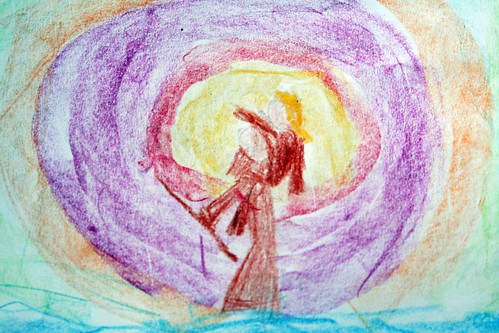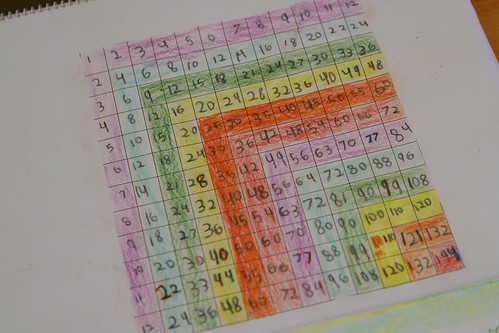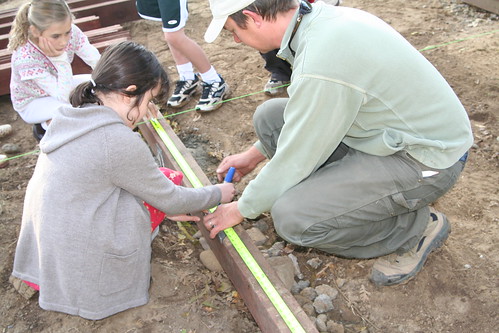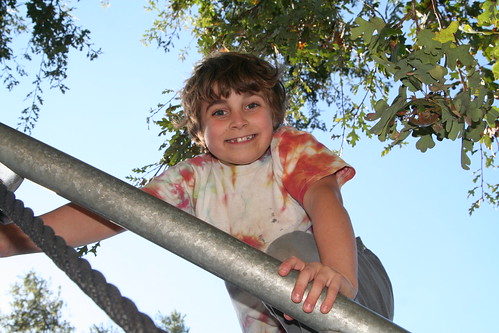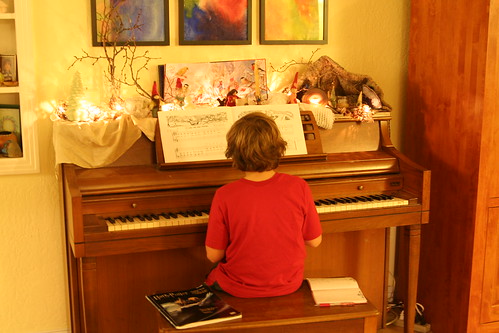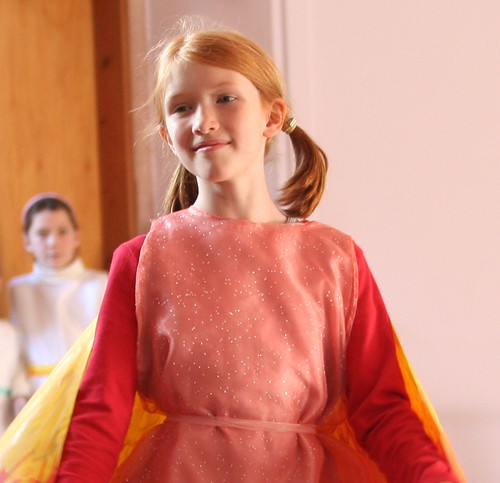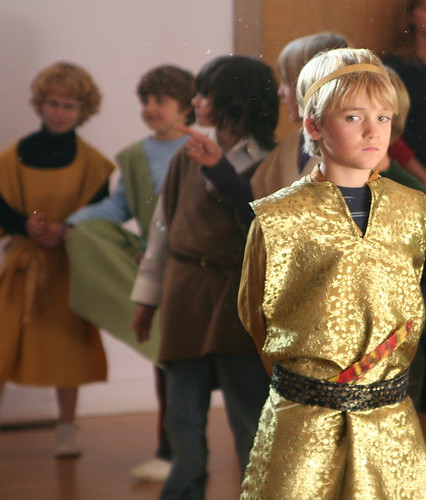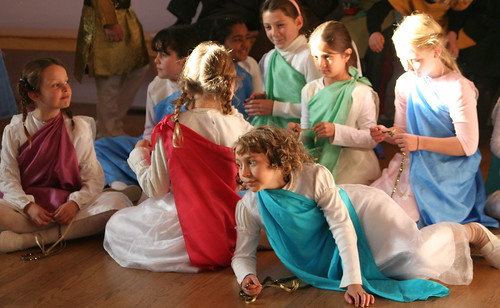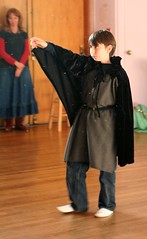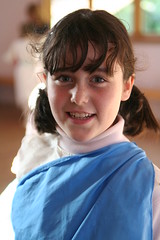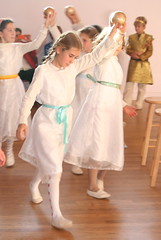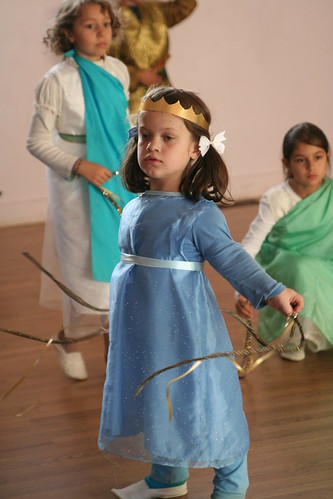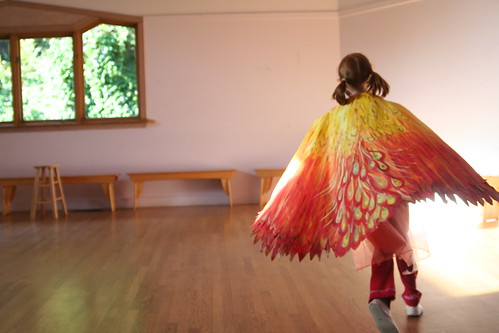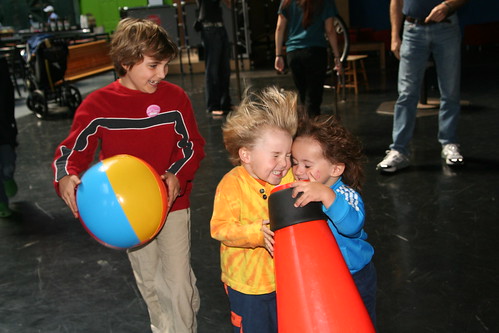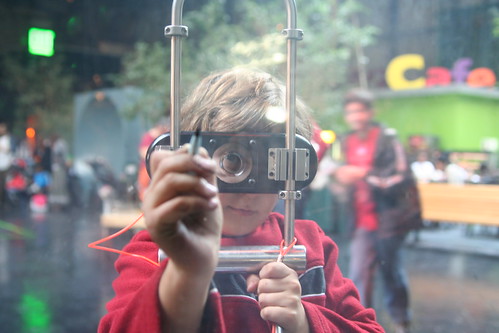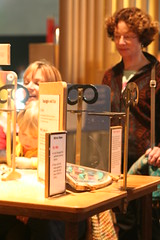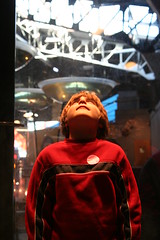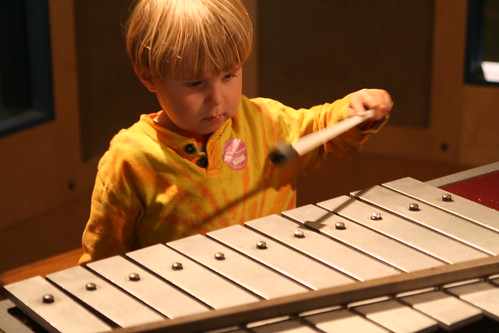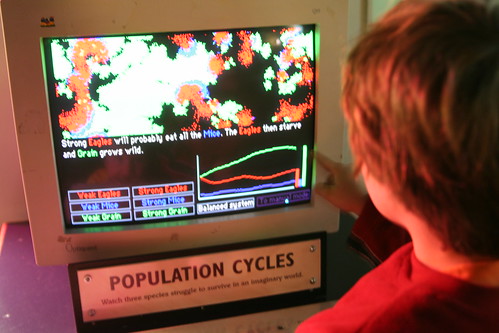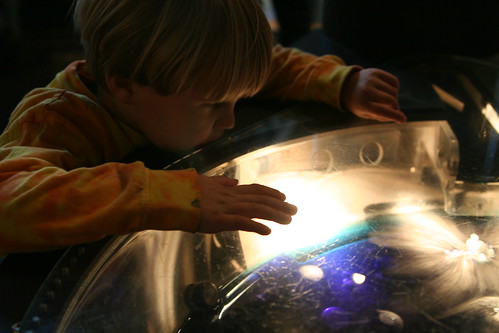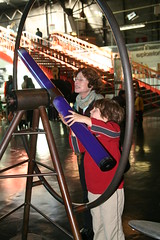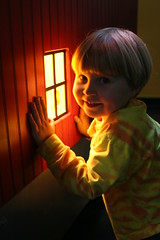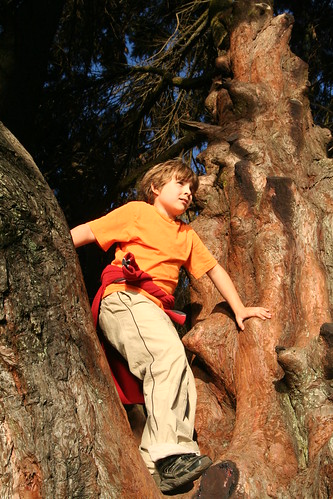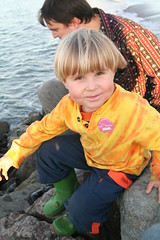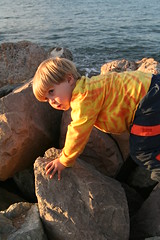Why Waldorf? Part 2
This is the second post in a three-part article about what Waldorf school looks like compared to public school. If you’re just coming to this, I encourage you to read Part 1, which can be found here. Please keep in mind that Ian and I are parents, not teachers, so our perspective on Waldorf is a parents’ perspective.
What does Waldorf school look like?
6. Curriculum. Reading, writing, and math are taught systematically, but probably not with the same system that you are familiar with if you come from public education. The Waldorf curriculum is not up to individual teachers, as it is long established, although teachers can mold things to their liking by choosing stories as teaching vehicles. They are not teaching out of an instructor’s manual and the students do not have textbooks of any kind. Rather, the teacher brings the lesson and the students make their own “lesson books.” Thus, they are constantly developing and using their reading, writing, math, and art skills no matter the subject. Students definitely are not doing whatever they want, as some people seem to assume about Waldorf education. Rather, students follow the lessons set before them by their teachers. More about the Waldorf curriculum can be found here.
7. Class Size and Student/Teacher Ratio. My son’s class has 28 students. It is up to the teacher and the administration to determine how many students he/she can take. They try to hover around 28 to 29 children. In first grade, there was a wonderful classroom aide to help the teacher, but probably more to help the young students adjust to being in a classroom for lessons and sitting in desks. Starting in second grade there is no classroom aide, but the students have the other specialty teachers I mentioned above. In third grade, which I discussed in more detail here, students do lots of cooking, and our dear Spanish teacher also helps with cooking to ensure appropriate supervision of the children while they are working in the in-classroom kitchen.
8. Media Use. The children have no access to computers or computer-assisted learning at school until they reach 8th grade or maybe even high school, I’m not sure. Waldorf is sometimes accused of being of technophobic in that way, but Waldorf teachers have very clear reasons why computers have no place in the lower grades. They strongly discourage the use of TV, movies, computers, and video games for young children, and they can be very adamant about it. There is a plethora of research to support the Waldorf ideal of no or minimal screen time. (I urge you to search the internet for research.) The use of media for the young child effectively drugs children. It robs them of their ability to use their imaginations to form the kind of detailed mental pictures that they need to form while reading, learning history, learning about cultures, learning abstract concepts of math and science, empathizing with others, and eventually in high level problem solving. Some might scoff and say imagination isn’t important. But Waldorf and industry leaders agree: If you cannot imagine that something can be done a different way, then you cannot innovate. The whole goal of Waldorf eduction is to teach children to think for themselves.
Now, to address computers and technology specifically I will admit that some children are using computers at home. My children mostly do not, although they are around us when we use our computers. Some people have asked me, “Don’t you worry about your kids not learning computers? However will they compete in a high-tech world if they don’t study computers in school?” Personally, I have no worries about my kids’ ability to pick up technology skills when the time is right; technology is part of our culture and children learn fast. Our kids will not be able to get away from technology in their lives—so I don’t mind at all staving that off for a later date. I want my kids playing when they’re young, using their hands and their bodies to explore and navigate the world, not sitting glued to a monitor. With that said, my 8-year-old has a pretty darn clear understanding of the Internet just through observing us use it over time, and my younger son has a great affinity for technology. In our home, it is not taboo but rather a useful tool that they do not yet need.
9. Clothing and Warmth. We do not have school uniforms, though there is a dress code: no logos, no pictures, no words on clothing, no camouflage, NO TV or movie characters. Ideal play clothes are warm and comfortable, layered to regulate temperature, and designed in such a way that the clothing does not take the wearer or the wearer’s classmates out of the here and now and into some other space. What I mean is, if a child puts on an outfit and wears it like a costume, letting the outfit dictate their attitude, personality, and receptivity, then that clothing is not conducive to learning. For example, a young child might wear army-green camouflage and then run around playing army and guns, which is discouraged at school. On the other hand, a girl dressed up in fancy princess clothes that make her put on airs or decline to run and play and hang upside-down is missing out on the learning opportunities of the school day. Teachers and administrators don’t want the children to be conscious of their clothing. The rules about clothing, jewelry, and hair color change somewhat as the children get older.
10. Student Evaluation. Waldorf students do not get report cards or letter grades. We get a skills evaluation at the midyear parent-teacher conference and we get an evaluation letter at the end of the school year. The letter is specifically about our child: who he is, what his is learning, what his strengths and weaknesses are, what he brings to the class, etc. There is also a long letter about what the class as a whole studied during the year, and it is broken into predictable chunks, such as Language Arts and Arithmetic, and also Music, Form Drawing, Drawing and Painting, Movement, Performances, and Books Read to the Class. I have to admit, I am thrilled to my core when I read my son’s evaluation letter, even the parts that explain where he needs more practice. Here’s an excerpt.
“Lucas has continued to be such a loving and joyful presence in our class this year. Whether he was creating rocket ships, organizing elaborate games full of imagery, or building great cities in the sand, Lucas was where the action was. Never at a loss for ideas, his eyes would twinkle with excitement when he had the opportunity to boldly create something he hadn’t before. Early in the year I introduced ‘free rendering’ to the children, whereby they could create in any form something from the story they had previously heard. While most drew or painted pictures, Lucas quickly asked, ‘Can it be 3D?’ In no time he was constructing a large castle made out of many pieces of paper rolled and taped together. As others joined in with Lucas at the helm, an amazing castle with drawbridges and towers was formed.”
Such a written evaluation allows us to know our child in his school environment, where we cannot and do not observe him directly. This teacher’s perspective is valuable; it is the observations of the adult who spends all those many hours in our son’s presence among his peers. It gives us a much better window into his growth and development (socially, academically, physically, intellectually) than any series of A’s, B’s, C’s, or D’s ever could.
This article will be continued in Part 3. Please join me there for more information on Waldorf schooling. As always, I welcome your comments!
